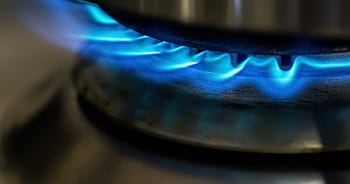How to conduct a business energy audit to help lower your consumption
If you’re a business owner, simply keeping afloat can be tough as the price of everything is rising and government decisions seem to be going against you. If you’re looking for ways to save on energy bills, you might benefit from carrying out an energy audit.
Carrying out an inspection of your energy processes and procedures can help you make smart choices moving forward. But what is an energy audit, and how can it lower your overall consumption? Read more below.
Five-point summary
- A business energy audit is an inspection of a company's energy usage. It aims to identify ways to reduce consumption and costs while promoting sustainability. It can be conducted internally or by a professional auditor.
- Businesses can choose between three types of audits: on-site audits, phone-based audits, and internal audits.
- An energy audit will analyse past and current energy consumption to identify inefficiencies. Assess equipment, insulation, lighting, and heating. Develop an action plan outlining findings, recommended changes, potential savings, and necessary investments.
- Performing an energy audit can help your business reduce operational costs, qualify for energy efficiency grants, and lower its environmental impact by minimizing wasted energy.
- Businesses with over 250 employees are legally required to conduct energy audits. The cost typically amounts to around 1% of total energy bills, making it a worthwhile investment for businesses of all sizes.
What is a business energy audit?
An energy audit is simply an inspection of your business. It looks at how much energy you are using overall.
Usually, an audit is carried out to uncover ways to lower energy consumption. This can help you make positive changes to save money and become a greener business.
During a business energy audit, you or an outside body analyses the energy usage in your premises and creates a plan for future changes.

Why is it important to carry out an energy audit for your business?
It can be valuable to carry out an energy audit on your business as it’s helpful to understand how much energy your business is using on a daily basis. An energy audit will also tell you which appliances or rooms in your premises are costing you the most. Running an audit can also help:
- Reduce your business's impact on the environment in the long run.
- Promote sustainability, helping you to become a greener business.
- Potentially lower your energy bills and save you money.
What are the three types of business energy audits?
There are a few main ways to carry out a business energy audit, certain options mean you can conduct one yourself whilst others might require an external auditor.
The main avenues to choose from are on-site, phone, and internal audits.
On-site audits
An on-site audit is when a professional auditor visits your business and makes notes on how you can save money. Essentially, the auditor will review your business and how it runs its day-to-day operations and see how much energy you’re using on average. From here, they’ll then inform you of any changes you can make to reduce your usage.
Usually, the auditor will review your lighting, heating, air conditioning and machinery processes. They will also investigate if there are any systems in your premises that use an unwarranted amount of energy or are wasting energy but not working correctly or running all the time when they needn’t
Phone-based audit
Being a business owner can mean your time is limited. So, you also have the option to have a professional auditor carry out the inspection over the phone to save time. This can be cheaper than an on-site audit, too.
The auditor will call you and ask questions about your business’s energy consumption. This information is collected to create a plan for you to follow. It will list ways you can individually save energy in the long and short term.
It’s useful to note that some energy providers provide a free over-the-phone business energy audit when you switch energy tariffs, so make sure you check with your provider to avoid missing out.
Internal audit
Another option is to carry out the audit yourself, this is known as an internal audit. Smaller businesses who want to save money on their energy bills but don’t have the finances to fork out for a professional auditor can carry out an audit themselves.
Bear in mind that this audit may not be as detailed as one from an external body but if you stick to a checklist, you can still find it valuable. If you are conducting an internal check, you should look for things like:
- Issues with insulation, e.g draughts
- Inefficient cooling and heating processes
- Air or water leaks
- Issues with lighting
Once you note down any obvious problems, you can decide which issues are first on your list to fix.
How do I conduct an energy audit?
If you decide you want to go down the route of conducting an energy audit yourself, there are a few steps to take to make sure it’s efficient.
Analyse your past and current energy consumption
Before starting an effective plan, you must first analyse your current energy situation. Looking at how your energy is currently being used can highlight the areas that need correcting. Look closely at any inefficient areas across every department in your premises and sites if you have multiple. Make a list of every area you use energy daily, eg lighting, heating, air conditioning and add up how much each is costing you.
Conduct a site walk around
When you have completed your analysis, you need to do a physical walk round of your business to see if everything is working as it should be. Examine energy usage by looking at the parts of your premises you listed earlier. Common areas audits uncover problems with are:
- Equipment usage – Make sure you check the efficiency and regularly maintain your equipment. Something as simple as not cleaning out an air filter can increase a machine’s energy consumption.
- Building insulation – Check for leaks, draughts and anywhere heat can be lost. There is no point in having the heating on if it’s escaping out of a hole in the wall. You might want to think about the long-term efficiency of your business, so things like double-glazing and wall insulation can be a great benefit if you don’t have them already.
- Lighting – Lots of businesses find that switching to energy-efficient lighting saves money and reduces bills.
- Heating systems – Check the schedules on your heating systems to ensure your building isn’t being heated when no one is there.
- Gas and electricity usage – Lots of businesses make use of off-peak tariffs when they only use energy at certain times. If this is viable for you, you might really benefit from it. Make a list of times you must use equipment, lights and heating and see if you could alter it to incorporate working during off-peak times.
When you know where you are potentially wasting energy, you can then work on changing things to make your premises more efficient.
Develop an action plan
Next, you must develop an action plan to stick to moving forward. There will most likely be a few processes you can implement straight away to start saving energy, such as turning lights off when staff members aren’t in rooms. On the other hand, some projects may require funding before work can start e.g, double glazing.
A write-up of your findings is always important and can be valuable to your business. Your plan should include the following:
Summary
First, you should include a summary at the beginning of your action plan to explain why it was carried out, the findings and any plans your business has for moving forward.
Introduction
Next, you should introduce your main energy, environmental and costs of running your business on a daily basis.
You could compare figures with other businesses in your niche and note any specific reasons for higher energy usage, for example, if your staff need to use specialised equipment to carry out their roles 8 hours a day. Or, if you need lights on for long periods because your premises is open to customers.
Survey findings
Next, you should write down what you found in the audit, any broken machinery or ineffective lighting as well as any leaks, cracks or ways energy is being wasted.
Recommendations
Next, you should note any actions to be taken and the benefits of each. Make sure you detail your estimated savings and any expected costs you may incur. For example, if you need to replace equipment that isn’t working properly.
You should also write down any small business grants you may be eligible for to become a more energy-efficient business.
Appendices
The last part of your audit should include anything else that isn’t included in the main part of the report.
Details can include any data and links gathered during the survey, notes on savings and costs and anything else you think should be included. It’s useful to note that a more formal business audit may be required if you plan on sending it to an external body, for example, to apply for funding.
How much does an energy audit cost?
According to the Department of Energy & Climate Change, a business energy audit should cost around 1% of your total energy bills.
So, it will differ for each business. But it is still a worthwhile step to improve the understanding of your business needs and see how you can make better energy choices.
Am I legally required to carry out a business energy audit?
A business energy audit is only a legal requirement for businesses with more than 250 employees. But, even if your business falls below this number, it can still be beneficial for businesses to carry one out.
How should your business act on energy audit findings?
Once you've got your energy report, you should act on the energy audit findings by implementing a structured approach to improve efficiency and cut costs. Here’s how:
1. Prioritise identified issues
- Review audit findings and categorise issues based on urgency, potential savings, and how easy they are to implement.
- Address quick fixes immediately, such as turning off unused equipment and switching to LED lighting.
2. Develop a detailed action plan
- Set clear, measurable goals for reducing energy consumption.
- Assign responsibilities to team members or departments for specific improvements.
- Establish timelines and milestones for implementing changes.
3. Invest in energy-efficient solutions
- Upgrade to energy-efficient appliances and machinery.
- Improve insulation, fix leaks, and optimise heating/cooling systems.
- Consider automation tools, such as smart thermostats and motion-sensor lighting.
4. Look for financial support & incentives
- Research government grants, tax incentives, or funding programs for energy efficiency improvements.
- Contact your energy suppliers and look into potential discounts or rebates for businesses adopting energy-saving measures.
5. Monitor and Adjust Strategies
- Regularly track energy usage to ensure implemented changes are effective.
- Conduct follow-up audits or evaluations to identify new areas for improvement.
- Engage employees in energy-saving practices and provide ongoing training.
By taking proactive steps based on audit findings, businesses can lower operational costs, reduce environmental impact, and enhance long-term sustainability.
How can Bionic help me with business admin?
It can be a hassle running a small business. At Bionic, we are here to answer any questions you may have about energy-saving measures. Plus, our helpful team are on hand to compare trusted suppliers for you, should you want to switch.
We can also take the stress out of business admin, freeing up time for you to focus on keeping your business secure.
Luckily, that’s where Bionic can help you save time, hassle, and unnecessary admin when sorting business essentials. We compare business gas and business electricity, as well as business phone and broadband to help make sure you're on the best deals.
We can also help with business insurance and business finance. Get in touch to find out more.








